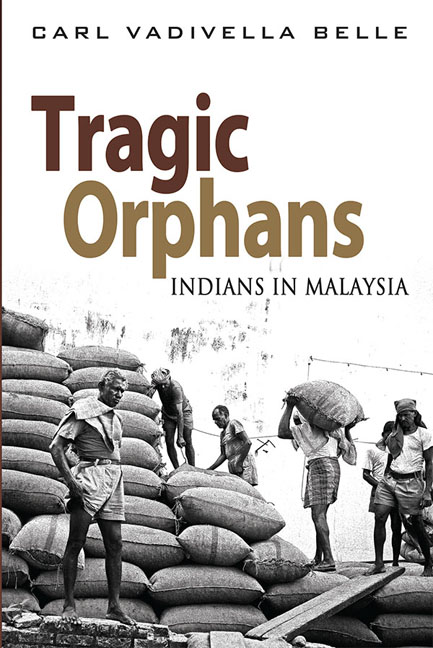Book contents
- Frontmatter
- Contents
- Acknowledgements
- List of Abbreviations
- Introduction
- 1 The Malay Peninsula: Early History, Melaka and the Colonial Setting
- 2 European Colonialism and the Malay Peninsula
- 3 India and the Development of British Ideologies of Empire
- 4 British Governance of Malaya
- 5 Slavery and Indentured Labour
- 6 Indian Indentured Labour in Malaya
- 7 Kangany Labour in Malaya
- 8 Other Indian Immigration
- 9 Indian Political Development to 1941
- 10 The Japanese Invasion, Subhas Chandra Bose and Indian Wartime Nationalism
- 11 The Post–war Period: Reform and Repression: 1945–48
- 12 From Federation to Merdeka
- 13 From Malaya to Malaysia: Singapore, 13 May and the New Economic Policy
- 14 The Mahathir Years: A Changing Malaysian Landscape
- 15 Abdullah Badawi, Islamization, and the Rise of Hindraf
- 16 Najib and 1Malaysia: A New Deal?
- Conclusions
- Bibliography
- Index
14 - The Mahathir Years: A Changing Malaysian Landscape
Published online by Cambridge University Press: 06 June 2017
- Frontmatter
- Contents
- Acknowledgements
- List of Abbreviations
- Introduction
- 1 The Malay Peninsula: Early History, Melaka and the Colonial Setting
- 2 European Colonialism and the Malay Peninsula
- 3 India and the Development of British Ideologies of Empire
- 4 British Governance of Malaya
- 5 Slavery and Indentured Labour
- 6 Indian Indentured Labour in Malaya
- 7 Kangany Labour in Malaya
- 8 Other Indian Immigration
- 9 Indian Political Development to 1941
- 10 The Japanese Invasion, Subhas Chandra Bose and Indian Wartime Nationalism
- 11 The Post–war Period: Reform and Repression: 1945–48
- 12 From Federation to Merdeka
- 13 From Malaya to Malaysia: Singapore, 13 May and the New Economic Policy
- 14 The Mahathir Years: A Changing Malaysian Landscape
- 15 Abdullah Badawi, Islamization, and the Rise of Hindraf
- 16 Najib and 1Malaysia: A New Deal?
- Conclusions
- Bibliography
- Index
Summary
In 1976 Tun Abdul Razak, the architect and overseer of much of the NEP, died in office. He was succeeded by Datuk Hussein Onn who had entered Tun Abdul Razak's first Cabinet as Minister of Education in September 1970. Datuk Hussein Onn's premiership was seen as an interregnum, a stewardship. In general, Hussein continued Razak's policies. Although PAS left the BN coalition in 1977, Hussein led BN to a comprehensive victory in the 1978 elections.
On his accession to the premiership, Hussein appointed Dr Mahathir Mohamad as his Deputy. Given Mahathir's chequered background, the appointment was considered controversial. Following the release of his infamous “open letter” to the Tunku in 1969, which explicitly imputed responsibility for the deaths of those slain in the mob violence of 13 May to the Tunku's leadership, Mahathir had been expelled from UMNO. He had subsequently returned to his medical practice in Alor Setar, where he wrote the book The Malay Dilemma, a work regarded as so contentious that it remained banned in Malaysia until after Mahathir's accession to the Prime Ministership. Mahathir was re-admitted to UMNO in 1972, and was allocated the Education portfolio under Tun Abdul Razak. Upon Hussein's retirement on 16 July 1981, Mahathir assumed the Prime Ministership.
Mahathir came to office with a mission to transform Malaysia into a sophisticated, developed and respected nation, with Malays playing a dominant role. His earliest political manifesto and guiding template for political action is established within The Malay Dilemma. This insists, inter alia, that the Malays comprise the founding and definitive “race” within Malaysia, and thus form the normative basis for Malaysian culture to which other “races” must acculturate themselves. Mahathir's analysis of the Malay character and capabilities consist of a series of broad, superficial and occasionally contradictory generalizations which collectively place Malays at an intrinsic disadvantage in their quest to achieve economic and intellectual parity with other “races”.
These views consolidated a nationalist narrative which had been bequeathed by, and had continued unbroken from, the racial ideologies of British colonialism, and which had been largely accepted by the UMNO leadership. In 1971, UMNO had published Revolusi Mental (Mental Revolution), which portrayed Malays in a completely negative light; as people who lacked the courage to face the truth, and as a “race” weakened by the qualities of fatalism and irrationality.
- Type
- Chapter
- Information
- Tragic OrphansIndians in Malaysia, pp. 331 - 387Publisher: ISEAS–Yusof Ishak InstitutePrint publication year: 2014

